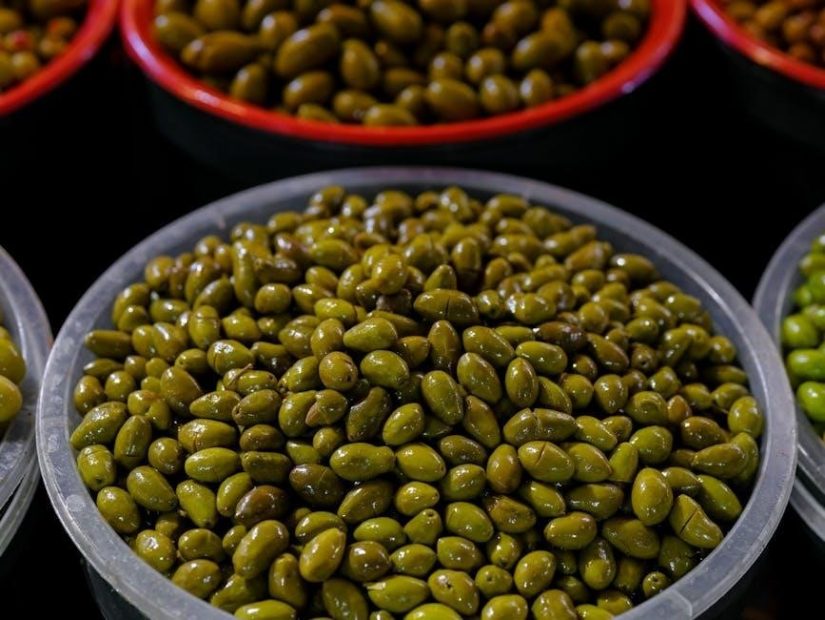A low histamine anti-inflammatory diet focuses on reducing histamine intake to alleviate inflammation and related symptoms․ It benefits conditions like histamine intolerance, MCAS, and autoimmune diseases, promoting overall well-being․
What is Histamine and Its Role in the Body?
Histamine is a biogenic amine that acts as a neurotransmitter and plays a key role in immune responses, digestion, and inflammation․ It is stored in mast cells and basophils and released in response to allergens or injury․ Histamine causes blood vessels to dilate, leading to increased permeability, which can result in symptoms like itching, swelling, and redness․ It also regulates stomach acid production and is involved in brain function, sleep-wake cycles, and appetite control․ While histamine is essential for physiological processes, excessive levels can contribute to inflammation and discomfort, making its management crucial for those with intolerance or related conditions․
Why a Low Histamine Diet is Important for Reducing Inflammation
A low histamine diet is crucial for reducing inflammation as histamine is a key player in inflammatory processes․ By lowering histamine intake, individuals can minimize excessive immune responses and alleviate conditions like urticaria, allergies, and autoimmune diseases․ High histamine levels can lead to chronic inflammation, which is linked to various health issues․ Reducing histamine through dietary adjustments helps stabilize mast cells, preventing excessive histamine release․ This approach supports the body’s natural anti-inflammatory mechanisms, promoting healing and reducing symptom severity․ It is particularly beneficial for those with histamine intolerance or mast cell activation syndrome, offering a natural way to manage inflammation and improve overall health․

Understanding Histamine Intolerance and Its Symptoms
Histamine intolerance occurs when the body cannot effectively break down histamine, leading to its accumulation․ Symptoms include hives, itching, digestive issues, and respiratory problems, often mimicking allergies․
Common Symptoms of Histamine Intolerance
Common symptoms of histamine intolerance include hives, itching, flushing, and skin rashes․ Digestive issues like bloating, diarrhea, and abdominal pain are frequent․ Respiratory problems, such as congestion, sneezing, and wheezing, may also occur․ Some individuals experience cardiovascular symptoms, including rapid heartbeat or dizziness․ Headaches and fatigue are common as well․ These symptoms can vary in severity and often resemble allergic reactions․ In severe cases, histamine intolerance can lead to anaphylaxis, a life-threatening condition․ Identifying and managing histamine-rich foods is crucial for alleviating these symptoms and improving quality of life․ Early recognition and dietary adjustments are key to controlling histamine intolerance effectively․
How Histamine Affects Inflammatory Processes
Histamine plays a significant role in inflammatory processes by acting as a pro-inflammatory mediator․ It is released by mast cells and basophils in response to allergic reactions or tissue damage․ Histamine increases capillary permeability, leading to swelling and redness, and recruits immune cells to the affected area․ This can exacerbate inflammation in conditions like arthritis, skin disorders, and respiratory issues․ Chronic elevated histamine levels may contribute to sustained inflammation, worsening symptoms in diseases like autoimmune disorders and mast cell activation syndrome․ Managing histamine intake through a low histamine diet can help reduce inflammation and alleviate associated conditions, highlighting the importance of dietary interventions in controlling inflammatory responses effectively․ This approach supports overall health and symptom relief․
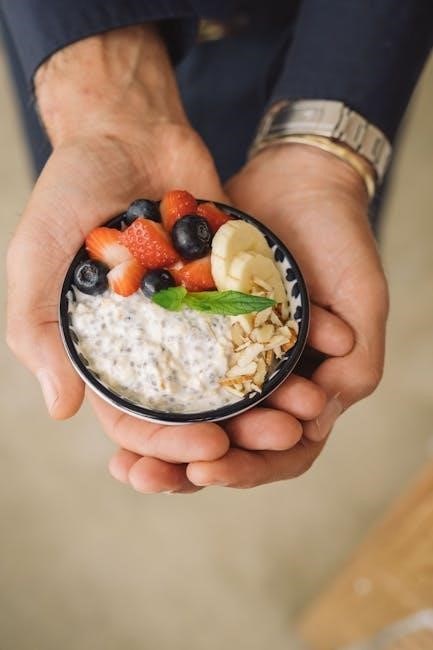
Foods to Avoid on a Low Histamine Diet
A low histamine diet requires avoiding fermented foods, aged cheeses, processed meats, fish, and alcohol, which are high in histamine and can exacerbate inflammation and symptoms․
High Histamine Foods: A Comprehensive List
High histamine foods include fermented products like sauerkraut, kimchi, kefir, yogurt, and aged cheeses such as Parmesan and Gouda․ Processed meats like salami, ham, and prosciutto are also high in histamine․ Fish, especially when canned, smoked, or aged, such as tuna, mackerel, and sardines, should be avoided․ Alcohol, particularly red wine, beer, and champagne, contains histamine․ Other high histamine foods include chocolate, soy products, and certain fruits like citrus, strawberries, and bananas․ These foods can trigger inflammation and symptoms in individuals with histamine intolerance․ Avoiding them is crucial for managing conditions like MCAS and autoimmune diseases․ A detailed list helps guide dietary choices for better symptom control and overall health․
Fermented Foods: Why They Are High in Histamine
Fermented foods are high in histamine due to the microbial fermentation process, which naturally produces histamine․ Foods like sauerkraut, kimchi, kefir, and yogurt contain elevated histamine levels․ During fermentation, bacteria and yeast break down amino acids, releasing histamine․ Longer fermentation times increase histamine content, making these foods problematic for those with histamine intolerance․ While fermented foods offer nutritional benefits, their histamine levels can trigger inflammation and symptoms in sensitive individuals․ Understanding this helps guide dietary choices for managing conditions like MCAS and autoimmune diseases․ Avoiding or limiting fermented foods is often necessary to reduce histamine intake and alleviate symptoms effectively․
Processed Meats and Fish: Their Histamine Content
Processed meats and fish are high in histamine due to factors like storage, processing, and spoilage․ Canned tuna, mackerel, and fermented sausages contain significant histamine levels․ Histamine forms when bacteria break down the amino acid histidine, especially in aged or spoiled products․ Processed meats like salami and ham also have high histamine due to fermentation and preservation methods․ Consuming these can trigger inflammation and symptoms in histamine-sensitive individuals․ To manage histamine intolerance, it’s crucial to avoid aged or processed products and opt for fresh, histamine-low alternatives․ Understanding histamine sources in these foods helps tailor diets for better symptom control and overall health․
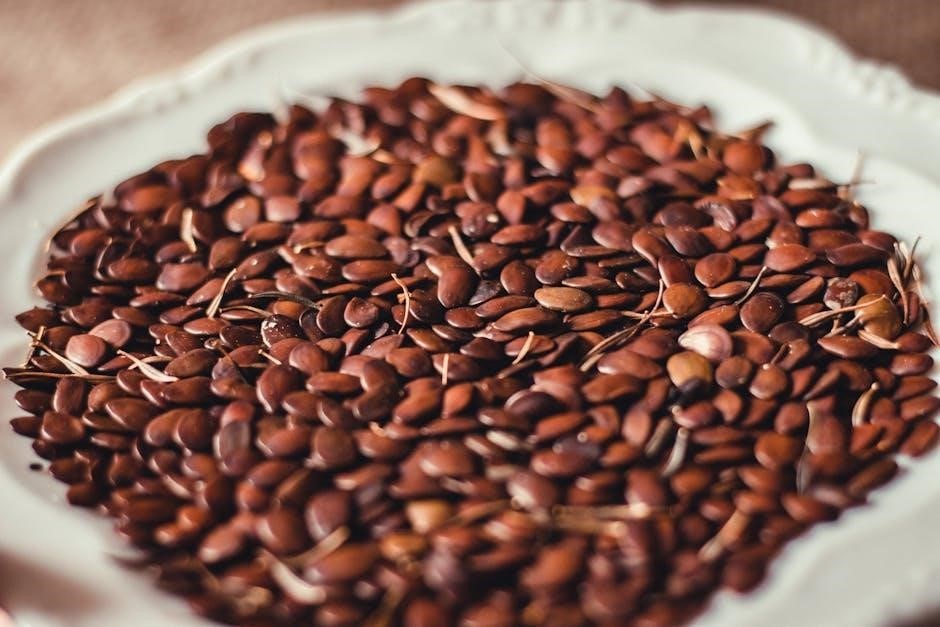
Foods to Include in a Low Histamine Diet
Incorporate fresh vegetables, lean proteins, and omega-3 rich foods to reduce inflammation․ These choices help manage histamine levels and promote overall healing and well-being naturally․
Fresh Vegetables: Low Histamine Options
Fresh vegetables are a cornerstone of a low histamine diet, offering numerous health benefits while minimizing histamine intake․ Leafy greens like spinach, kale, and arugula are excellent choices, as they are naturally low in histamine and rich in anti-inflammatory nutrients․ Cucumbers, bell peppers, and zucchini are also safe options․ These vegetables provide essential vitamins, minerals, and antioxidants that support overall well-being․ Incorporating fresh, non-fermented varieties ensures histamine levels remain low․ Avoid wilted or stored vegetables, as histamine can accumulate over time․ Pairing these vegetables with lean proteins and omega-3 rich foods enhances their anti-inflammatory effects, making them a vital part of a balanced, histamine-friendly diet․
Lean Proteins: Choosing the Right Meats
Lean proteins are a key component of a low histamine diet, providing essential nutrients while minimizing histamine intake․ Fresh meats like chicken, turkey, and beef are excellent choices, as they are naturally low in histamine when consumed fresh․ Wild-caught fish, such as cod and salmon, are also ideal due to their low histamine content and high omega-3 fatty acids, which support anti-inflammatory processes․ Avoid processed, aged, or fermented meats, as these tend to have higher histamine levels․ Opting for pasture-raised and organic options ensures better quality and lower histamine exposure․ Proper storage and cooking of meats are crucial to prevent histamine buildup, making lean proteins a healthy and sustainable choice for managing inflammation and histamine intolerance․
Fresh Fruits: Which Ones Are Safe?
Fresh fruits are a nutritious and essential part of a low histamine diet, offering antioxidants and anti-inflammatory benefits․ Opt for fresh, ripe, and organic options to minimize histamine content․ Berries, such as strawberries, blueberries, and raspberries, are excellent choices due to their low histamine levels and high nutrient density․ Apples, bananas, and pears are also safe and versatile; Avoid tropical fruits like mangoes, pineapples, and kiwis, as they tend to have higher histamine levels․ Citrus fruits like oranges and grapefruits are generally well-tolerated but should be consumed in moderation․ Fresh fruits support the diet’s anti-inflammatory goals while providing natural sweetness and essential vitamins․
Omega-3 Rich Foods for Reducing Inflammation
Omega-3 fatty acids are key players in reducing inflammation and are safely incorporated into a low histamine diet․ Fatty fish like wild-caught salmon, sardines, and mackerel are excellent sources, as they are naturally low in histamine when fresh․ These fats help mitigate inflammatory responses by balancing pro-inflammatory and anti-inflammatory pathways․ Plant-based options like flaxseeds and walnuts also provide omega-3s without histamine spikes․ Moderate portions are essential, as excessive intake can sometimes trigger sensitivity․ Incorporating omega-3 rich foods supports the diet’s anti-inflammatory goals while offering cardiovascular and neurological benefits, making them a vital component for overall health and symptom management․
Meal Planning and Recipes
A structured plan with fresh, histamine-friendly ingredients helps manage symptoms․ Breakfast ideas like smoothies and recipes for balanced meals ensure variety and adherence to the diet․
Sample Meal Plan for a Low Histamine Diet
A sample meal plan includes fresh, histamine-friendly foods like coconut milk smoothies for breakfast, grilled chicken with quinoa and steamed vegetables for lunch, and fresh fish with sweet potatoes and green beans for dinner․ Snacks such as cucumber slices and fresh fruit are ideal․ The plan emphasizes avoiding fermented, processed, and aged foods while incorporating omega-3 rich and anti-inflammatory ingredients․ Meals are designed to be simple, nutritious, and tailored to reduce histamine intake, helping manage symptoms associated with histamine intolerance or inflammatory conditions like MCAS or autoimmune diseases․ This structured approach ensures balanced nutrition while minimizing potential triggers․
Breakfast Ideas: Histamine-Friendly Recipes
Start your day with histamine-friendly options like fresh fruit smoothies made with coconut milk, banana, and spinach․ Scrambled eggs with zucchini and fresh herbs or a coconut milk pudding with chia seeds are great choices․ Oatmeal can be enjoyed with fresh berries and a drizzle of maple syrup․ Consider a green smoothie with kale, pear, and ginger for an anti-inflammatory boost․ Avoid aged cheeses, processed meats, and fermented foods․ Opt for fresh, non-fermented ingredients to keep histamine levels low․ These recipes are designed to be nutritious, easy to prepare, and histamine-friendly, helping you maintain a balanced diet while managing inflammation and histamine intolerance symptoms effectively․
Lunch and Dinner Options: Easy and Delicious
For histamine-friendly lunches and dinners, focus on fresh, non-fermented ingredients․ Grilled chicken or turkey with steamed vegetables like zucchini, carrots, and green beans make satisfying meals․ Baked salmon with sweet potatoes and fresh herbs is another excellent option․ Quinoa or rice can be paired with sautéed spinach and bell peppers for a nutrient-rich dish․ Avoid processed meats, aged cheeses, and fermented condiments․ Incorporate omega-3 rich foods like fresh fish to reduce inflammation․ Use fresh herbs and spices for flavor instead of high-histamine sauces․ These meals are not only delicious but also align with anti-inflammatory and low histamine dietary goals, helping to manage symptoms effectively while maintaining nutritional balance․
Snacks: Healthy Choices That Fit the Diet
Snacking on the low histamine diet can be simple and satisfying․ Fresh fruits like apples, pears, and bananas are excellent choices, as they are naturally low in histamine․ Vegetables such as cucumber slices, celery sticks, or bell pepper strips are also great options․ Nuts like almonds, pumpkin seeds, and sunflower seeds are histamine-friendly and provide healthy fats and protein․ Avoid fermented or processed snacks, as they often contain high histamine levels․ Fresh fruit smoothies made with anti-inflammatory ingredients like quercetin-rich apples or pears can be a delicious and nutritious snack․ Always opt for fresh, whole foods to keep histamine levels in check while satisfying cravings․
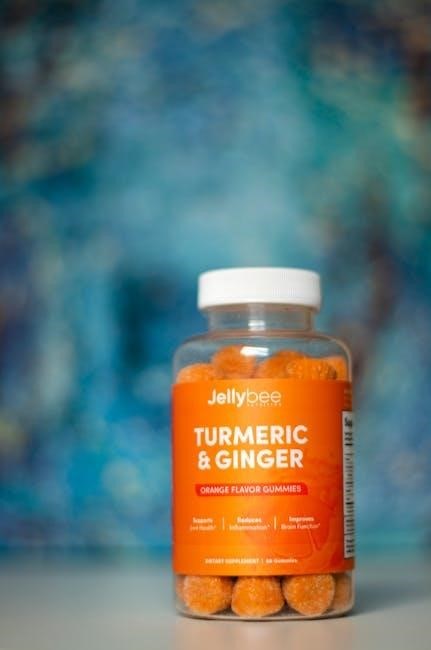
Implementing the Diet: Steps and Tips
Start by eliminating high histamine foods and focusing on fresh, whole ingredients․ Gradually reintroduce foods to assess tolerance, managing symptoms and ensuring a balanced approach․
Step-by-Step Guide to Starting the Diet
Begin with a 1-week elimination phase, removing alcohol and high histamine foods․ Focus on fresh vegetables, lean proteins, and low histamine fruits․ Stay hydrated and avoid processed foods․ Gradually reintroduce foods one at a time after 4 weeks, monitoring symptoms․ Track reactions in a journal to identify triggers․ Consider consulting a dietitian for personalized guidance․ Ensure meals are balanced and nutrient-rich to maintain overall health during the transition․ This structured approach helps manage histamine intolerance and reduces inflammation effectively․
How to Reintroduce Foods After the Elimination Phase
After the elimination phase, reintroduce foods one at a time, starting with small portions․ Begin with low-to-moderate histamine foods, such as ripe bananas or cooked meats, and monitor for symptoms like hives, itching, or digestive issues․ Wait 48-72 hours before adding another food to ensure reactions are accurately identified․ Keep a symptom journal to track responses․ If symptoms occur, remove the food and wait 24 hours before testing the next․ Gradually expand your diet, prioritizing fresh, whole foods․ If tolerance is confirmed, incorporate the food into meals․ Avoid rushing the process, as this can trigger inflammation or histamine overload․ Professional guidance is recommended for personalized reintroduction strategies․
Tips for Eating Out While on a Low Histamine Diet
Eating out on a low histamine diet requires careful planning and communication․ Choose restaurants with fresh, whole-food options and avoid establishments serving fermented or processed dishes․ Inform your server about your dietary restrictions and ask for modifications, such as no aged cheeses or cured meats․ Opt for grilled meats, fresh vegetables, and simple preparations to minimize histamine content․ Avoid sauces and dressings, as they may contain hidden histamine triggers․ Request small portions to control intake and ensure ingredients are fresh․ Consider eating at home before dining out to reduce hunger and temptation․ Always carry a list of safe foods for reference․ Prioritize restaurants with flexible menus and knowledgeable staff to ensure a safe and enjoyable experience․
The Anti-Inflammatory Aspect of the Diet
The low histamine diet reduces inflammation by limiting histamine intake, which can trigger inflammatory responses․ Anti-inflammatory nutrients like quercetin help mitigate histamine’s effects, promoting healing and balance․
How Histamine Contributes to Inflammation
Histamine is a key player in the body’s immune and inflammatory responses․ It increases capillary permeability, leading to swelling and redness, hallmark signs of inflammation․ When released from mast cells, histamine can trigger allergic reactions and exacerbate inflammatory processes in tissues․ While histamine has a dual role, with some receptor interactions offering anti-inflammatory effects, its overall impact often leans toward promoting inflammation, especially in conditions like histamine intolerance or autoimmune diseases․ Managing histamine levels through dietary adjustments can help mitigate excessive inflammatory responses, reducing discomfort and improving overall health․
The Role of Anti-Inflammatory Nutrients
Anti-inflammatory nutrients play a crucial role in balancing histamine’s effects and reducing inflammation․ Omega-3 fatty acids, found in fatty fish and flaxseeds, are potent anti-inflammatory agents that counteract histamine’s pro-inflammatory actions․ Antioxidants like vitamin C and quercetin stabilize mast cells, preventing excessive histamine release․ Quercetin, in particular, is renowned for its ability to block histamine receptors and inhibit inflammatory pathways․ Additionally, zinc and magnesium support immune regulation, further diminishing inflammation․ Incorporating these nutrients into a low histamine diet enhances its efficacy, fostering a balanced immune response and alleviating symptoms associated with histamine-related inflammation and intolerance․
Quercetin and Other Natural Anti-Inflammatory Agents
Quercetin, a flavonoid found in fruits, vegetables, and herbs, is a powerful natural anti-inflammatory agent․ It inhibits histamine release from mast cells and blocks histamine receptors, reducing inflammation․ Other natural agents like curcumin from turmeric and resveratrol from berries also suppress inflammatory pathways․ These compounds work synergistically with a low histamine diet to alleviate symptoms․ Incorporating quercetin-rich foods, such as apples and onions, and supplements can enhance the diet’s effectiveness․ Together, these agents support immune balance, making them essential components of an anti-inflammatory lifestyle․
Histamine Intolerance and Its Connection to Inflammation
Histamine intolerance occurs when the body cannot effectively break down histamine, leading to excess levels․ This triggers inflammation, as histamine increases capillary permeability and activates inflammatory pathways․ Symptoms like skin rashes, digestive issues, and respiratory problems often result․ The condition is linked to impaired diamine oxidase (DAO) enzyme activity, which is responsible for histamine degradation․ A low histamine diet helps reduce inflammation by minimizing histamine intake from foods․ Additionally, natural anti-inflammatory agents like quercetin can support mast cell stability, further alleviating inflammation․ Managing histamine levels through diet is crucial for those with intolerance, as chronic inflammation can worsen symptoms and contribute to conditions like autoimmune diseases and mast cell activation syndrome․
Mast Cell Activation Syndrome (MCAS) and Diet
Mast Cell Activation Syndrome (MCAS) is a condition characterized by excessive mast cell activity, leading to the release of histamine and other inflammatory mediators․ Diet plays a crucial role in managing MCAS, as certain foods can trigger mast cell activation․ A low histamine diet is often recommended to reduce symptoms, as histamine-rich foods can exacerbate inflammation and mast cell instability․ Additionally, avoiding DAO inhibitors and other biogenic amines is essential․ Incorporating anti-inflammatory nutrients like quercetin and omega-3 fatty acids can help stabilize mast cells and alleviate symptoms․ A structured dietary approach can significantly improve quality of life for individuals with MCAS by minimizing triggers and promoting a balanced inflammatory response․
Autoimmune Diseases and the Role of Diet
Diet plays a pivotal role in managing autoimmune diseases, as certain foods can trigger inflammation and exacerbate symptoms․ Autoimmune conditions often involve heightened inflammatory responses, which histamine can amplify․ A low histamine diet helps reduce inflammation by minimizing exposure to histamine-rich foods․ Additionally, anti-inflammatory nutrients like quercetin and omega-3 fatty acids can support immune regulation․ For individuals with autoimmune diseases, adopting a tailored dietary approach can help alleviate symptoms and improve quality of life․ By focusing on fresh, histamine-stable foods and avoiding triggers, patients can better manage their condition and reduce reliance on medication․ A personalized diet plan is essential for optimal outcomes․
Supporting Overall Health
A low histamine anti-inflammatory diet promotes gut health, balances hormones, and enhances mental well-being by reducing inflammation and histamine-related stress on the body․
The Importance of Gut Health in Histamine Management
Gut health plays a crucial role in histamine management, as the microbiome influences histamine metabolism and tolerance․ An imbalance in gut bacteria, or dysbiosis, can impair histamine degradation, leading to elevated levels․ The gut lining acts as a barrier against histamine-rich foods and toxins, and its integrity is vital for preventing histamine overabsorption․ Beneficial bacteria, such as Bifidobacterium and Lactobacillus, support histamine-degrading enzymes like diamine oxidase (DAO) and histamine N-methyltransferase (HNMT)․ A diet rich in prebiotics, probiotics, and anti-inflammatory foods, such as leafy greens, berries, and garlic, can foster a balanced microbiome․ Additionally, avoiding gut irritants like processed foods and alcohol helps maintain gut health, reducing histamine-related inflammation and promoting overall well-being․
Hormonal Balance and the Low Histamine Diet
Hormonal balance is intricately linked to histamine regulation, as histamine influences and is influenced by hormones like estrogen and cortisol․ Elevated histamine levels can disrupt hormonal equilibrium, worsening symptoms in conditions like histamine intolerance․ The low histamine diet helps mitigate this by reducing histamine triggers, which may alleviate hormonal fluctuations․ Certain nutrients, such as vitamin B6 and magnesium, support histamine metabolism and hormonal stability․ Foods rich in these nutrients, like leafy greens and nuts, are emphasized in the diet․ Additionally, avoiding gut-disrupting foods can promote hormonal balance by stabilizing the microbiome․ By managing histamine intake, the diet supports overall hormonal equilibrium, reducing inflammation and improving well-being․
Mental Health Benefits of an Anti-Inflammatory Diet
An anti-inflammatory diet, particularly one low in histamine, offers significant mental health benefits by reducing systemic inflammation linked to mood disorders․ Histamine plays a role in neurotransmitter regulation, and elevated levels can contribute to anxiety, depression, and brain fog․ By minimizing inflammatory triggers, the diet supports a healthier gut-brain axis, which is crucial for mental clarity and emotional stability․ Certain nutrients, such as omega-3 fatty acids and antioxidants, reinforce neural health, while avoiding histamine-rich foods can alleviate symptoms like irritability and fatigue; This dietary approach fosters a balanced inflammatory response, promoting overall mental well-being and resilience against stress․
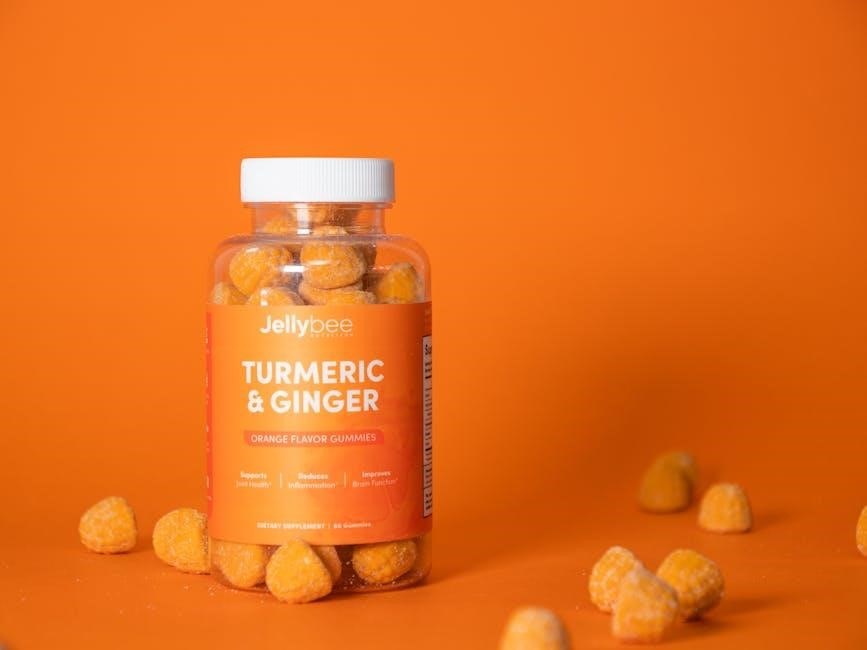
Consulting Healthcare Professionals
Consulting healthcare professionals is crucial for personalized guidance on a low histamine diet, ensuring safe implementation and addressing underlying conditions effectively with expert monitoring and support․
When to Seek Professional Guidance
Seek professional guidance if symptoms persist or worsen despite dietary changes․ A healthcare provider can diagnose underlying conditions like histamine intolerance or MCAS, and tailor treatment plans․ They may recommend tests to assess histamine levels or enzyme function․ Additionally, consulting a registered dietitian ensures a well-balanced diet that meets nutritional needs while minimizing histamine intake․ Professional advice is especially crucial for those with complex medical histories or autoimmune diseases․ Early intervention can prevent complications and improve quality of life․ Always consult a healthcare professional before making significant dietary changes or starting supplements․
Working with a Registered Dietitian
Collaborating with a registered dietitian is essential for creating a personalized low histamine anti-inflammatory diet․ They assess your health history, symptoms, and lifestyle to design a tailored meal plan․ Dietitians ensure nutritional adequacy, helping you avoid deficiencies while minimizing histamine intake․ They also guide the reintroduction of foods after an elimination phase, monitoring tolerance and adjusting plans accordingly․ Regular follow-ups help track progress and make necessary adjustments․ A dietitian’s expertise ensures a balanced approach, addressing both histamine management and overall health goals․ Their support is invaluable for maintaining long-term adherence to the diet and achieving optimal wellness․
